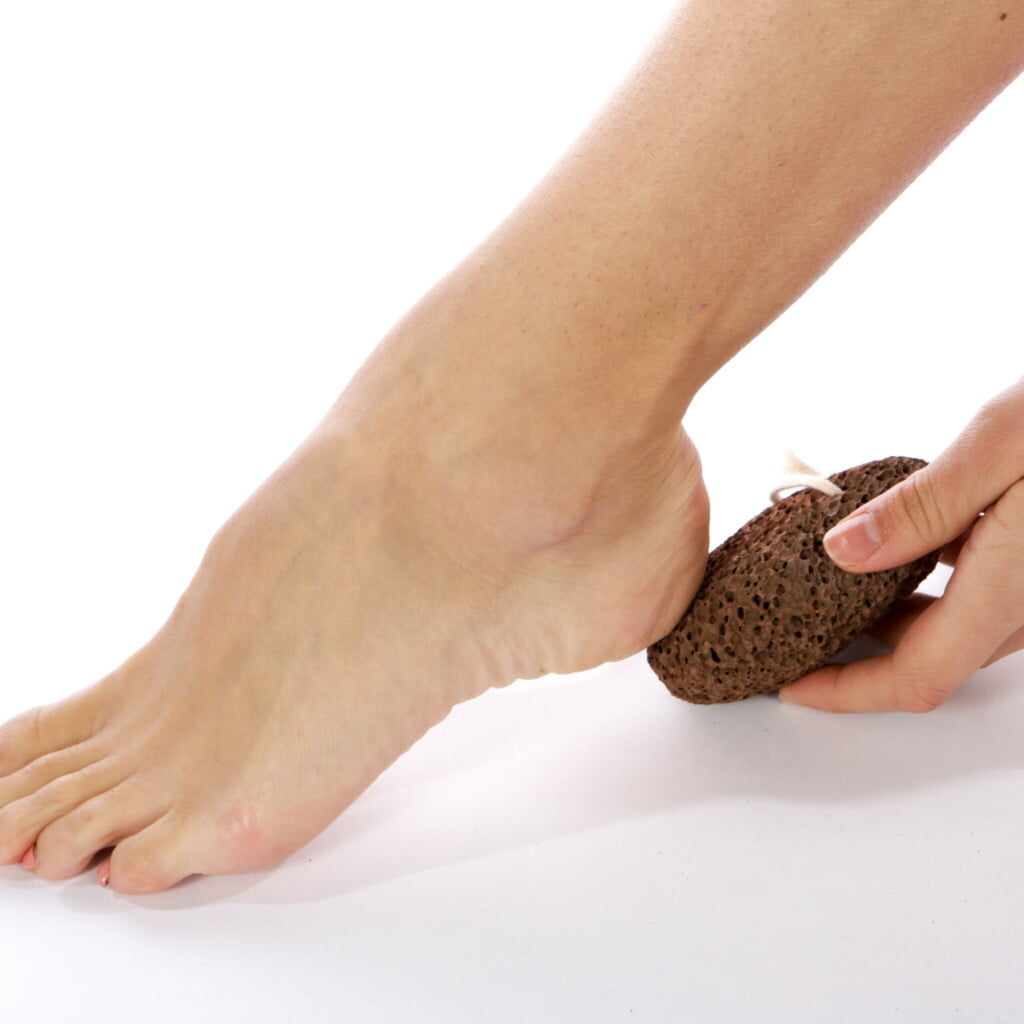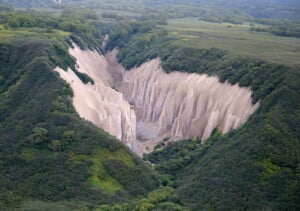Personal Care
How To Use A Pumice Stone
Pumice stones are natural tones formed from volcanic lava and have been a health and beauty staple for hundreds of years. Aside from their awesome usefulness as cosmetic abrasives and exfoliators, they’re actually very interesting, quite beautiful and come in many different forms depending on the mineral content of the volcanic lava.
Pumice stones are very rough, hard and have lots of sharp-edged grooves and bubbles that make them excellent abrasives or exfoliators for the skin. Not only are they extremely efficient at removing dry skin, corns, callouses and other imperfections, they’re also all-natural, sustainable and environmentally-friendly.
Whilst using a pumice stone may seem quite easy and intuitive, in reality, there are a few things you need to do to get the most out of it. Also, with bad technique, you can run the chance of irritating abrasion and minor cuts. Fear not, though, as pumice stones are still easy to use provided you follow a few simple steps.
Table of Contents
What is a Pumice Stone?
We may all know that pumice stones are indeed natural stones, but how are they formed?
Pumice stones are forged by volcanoes and volcanic activity. Yep, they actually came from lava beneath the earth’s crust! When a volcano spews out lava, or molten rock, some of this mixes with the air and other gasses to form rocks full of tiny holes. The tiny holes result from the air bubbles within the lava, it’s kind of like a super-hot and frothy foam.
When this frothy lava cools down, it hardens. Once fully cooled, it solidifies into pumice stone. Pumice stones may be colossal in size, as big as a car or even larger. Others are much smaller. Once cool and when it is safe to do so, pumice stones are collected from near volcanoes and can be cut and shaped if necessary.
Pumice stones are extremely plentiful and given that volcanoes provide a near-infinite supply of volcanic rocks including pumice, they are sustainable.
Pumice has been used for millennia, in fact, uses of pumice date back to 100 B.C, over 2000 years ago! It’s not only great at cleaning the body and exfoliating the skin, but also for rubbing down and filing wood or stone, smoothing fabrics and cleaning hard surfaces. Today, however, pumice stones are best known for their role in the health and beauty industry. They’re a sustainable and effective natural exfoliator that can do wonders for our skin.
What are the Benefits of Pumice Stones?
Pumice stones are natural abrasives and exfoliators. The tiny holes on their surface act as a natural form of sandpaper and can rub dead skin or other surfaces. Unlike artificial alternatives, pumice is entirely natural. This means that there are no harmful chemicals involved that could potentially get into your skin or bloodstream. This is a huge advantage vs artificial exfoliators.
Pumice is a Natural and Sustainable Product
Pumice comes from volcanoes and is very plentiful. Volcanoes produce and spew out pumice in vast quantities. This means it doesn’t have to be mined from beneath the earth’s crust. Instead, pumice is essentially distributed by the volcano on the surface of the earth and can simply be gathered up!
Pumice is not only sustainably produced but also sustainable to mine. Also, whilst pumice originally comes from volcanic activity, it is not necessarily mined from near any active volcanoes! It may have already been deposited from volcanic activity hundreds or even thousands or millions of years ago. Pumice rock formations can be found all over the world. For example. Kutkhiny Baty in Russia, a beautiful valley made from pumice, was formed over 7000 years ago!
Also, since pumice is natural, it’s free from chemical additives and other nasties that might be bad for the skin. This also means it’s hypoallergenic and extremely unlikely to cause allergies.
Pumice is Great for the Skin
Of course, pumice’s main benefit and uses are in cosmetics, health and beauty. This is not a new thing. The ancient Chinese and Romans used pumice to clean their teeth, rub and smooth their nails and remove hair from the legs and face. As an exfoliator, pumice is still used in the same way today as it ever was.
When you use pumice, you’re using a piece of health and beauty history!
When used as an exfoliator, pumice has many superb properties that can smooth skin gently without too much abrasion or damage. It’s rough, but not too rough. Sharp, but not too sharp. Of course, all pumice varies and whilst at Clear Confidence, we stock only the best natural pumice suitable for cosmetic use, you can get much sharper forms of pumice and also very smooth pumice.
Pumice is Easy to Use
…When you know how! In a minute, we’re going to explain how to use a pumice stone. It’s simple and pretty fun and satisfying. The best thing, as mentioned, is that using a pumice stone is natural and avoids us using harmful chemicals such as chemical peels or other harsh exfoliators. Why bother with that when you can use a pumice stone?
How To Use a Pumice Stone
Firstly, it depends on what area you need to target. You can use a pumice stone on pretty much any area of the skin in need of abrasion and/or exfoliation.
The typical target for pumice is the dry skin of the feet and any callouses on the hands. Harder skin reacts very well to pumice.
You can, however, use pumice on the face, legs and most other areas. The only rule is that the softer and more sensitive the area is, the more careful you need to be. Each pumice stone is different and some may be sharper than others. It’s always sensible to get a feel of your pumice stone by using it on more common areas, such as the feet.
The golden rule of using pumice is to start slowly and work it gradually. If you go rubbing it in super-strong motions across your skin then don’t be surprised if you cause some major irritation! Just because you don’t notice results instantly doesn’t mean the pumice isn’t working – it’s a slow process – enjoy it!
Feet and Hands
The feet and hands are prime areas for pumice. Thick skin can form into callouses and corns that are sore and painful when they rub on shoes, gloves, the floor or items you grip. On the hands, you may find callouses on the fingertips or at the base of fingers and thumbs. On the feet, you can find callouses or corns almost anywhere.
If you leave callouses to build up, they might eventually tear and become much worse!
- Soak your feet and hands in warm, soapy water. This softens the skin and helps loosen dead surface skin. A pumice stone on dry skin will usually be too abrasive and it could even cause cuts or grazes.
- Massage the area with a wet pumice stone under the water. This will gently remove the loosened skin cells.
- Remove the area from the water and gently dry it before massaging a wet pumice stone over the area working in circular motions. Stop if you experience excess redness, soreness, cuts or other adverse reactions.
- Apply moisturiser to the area.
Once finished, clean the stone of any soap and let it dry on its own. For a deeper cleanse of the stone, you can place your pumice stone in boiling water.
Face and Neck
Pumice can be used on the face and neck, you just have to be careful. It’s best to test your pumice stone out on other areas first as you may find one side or area is sharper or more abrasive than the other. You want to use the least abrasive section on your face and neck.
- Clean the area properly and soak it in warm, soapy water. it’s ideal if you can take a shower prior to using pumice on your face and neck as this will really help open the pores and soften the skin. Make sure it’s hot and steamy for best results!
- Gently work a wet pumice stone across the skin. It’s likely best to use small and gentle circular motions. Always start very gently and examine your skin closely. You’ll likely see and feel it smoothen out as dead skin is removed gently by the pumice stone.
- Once finished, wash the area again and apply cold water. This will seal up your pores and tighten the skin. It’s then time to add some moisturiser or serum, but make sure it’s suitable for sensitive skin. You don’t want to add any particularly harsh chemical cleansers to your skin after using pumice as it will be slightly sensitive resulting from the abrasion.
- As usual, slow down or stop if you experience any pain, soreness or excess redness.
As a Hair Removal Tool
Pumice is also very useful for removing hair. It can be used on the face, legs, arms, hands and bikini line to gradually lift smaller hairs that aren’t easily caught with a razor. This can enhance any waxing routine also by keeping smaller hairs at bay in between waxing treatments. As you go, you are also exfoliating the skin, so it’s a win-win!
- Wash and immerse the skin with hot water and let it soften for 5 to 10 minutes. A bath here is ideal. You want the skin as soft as possible and the pores opened up.
- Work a wet pumice stone over the area in repeat circular motions. Start gently at first. Make sure the area is lubricated with soap and water.
- Once complete, use the pumice again but on dryer skin. Be careful here as a dry pumice stone on dry skin can be very abrasive.
- Wash and clean the area before applying cold water and moisturiser.
What to Watch out For
When using pumice, you do need to watch out for a couple of things. It is naturally sharp and abrasive and if you go in too hard and fast then you may regret it. It isn’t exactly dangerous to use pumice aggressively but you may cut and graze yourself. This really isn’t ideal, especially on the face and neck.
Also, some people’s skin really doesn’t react well to abrasives in general. If you feel your skin is extremely sensitive then you need to treat it extremely sensitively. That means using only wet pumice on skin softened properly with warm water and soap. Wetting the stone aids lubrication and the softer your skin, the easier it’ll be to exfoliate.
If you do experience adverse reactions then stop using pumice. Always keep an eye on your skin to see how it is reacting. It’s highly likely pumice will be just fine for you but if it does cause irritation, pain, soreness or other adverse reactions then stop.
Summary
Pumice stones have been used for thousands of years and are still held in high regard today as abrasives and exfoliators. Not only are they sustainable, all-natural products that are plentiful and environmentally-friendly, but they’re also awesome at their job. They’d have been replaced if they weren’t!
Using pumice does require some minor practice but once you’ve got your technique dialled in, it’s easy. Pumice can naturally exfoliate the skin as gently or intensely as you like. Just remember to exercise caution, prepare the skin and never rub too hard. At the first signs of adverse reactions, slow down or stop.
Pumice, when used properly, is a wonderful cosmetic tool that will always have its place in bathroom and spa cabinets around the world. It’s one of those natural materials that just can’t be improved artificially, which is awesome!



8 simple steps to the best shave
8 simple steps to the best shave possible